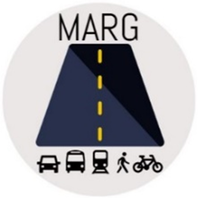The Vehicle Fleet Composition (VFC) Model Package

The development of the Vehicle Fleet Composition (VFC) modeling package was sponsored by the Maricopa Association of Governments (MAG), the metropolitan planning organization (MPO) for the Greater Phoenix metropolitan area. Additional support was provided by Arizona State University (ASU) and Georgia Institute of Technology (Georgia Tech).
With increasing interest in understanding, explaining, and quantifying the energy and emissions impacts of vehicular travel, there is a growing need to forecast the mix of vehicles that are owned and operated by households in a region. The composition of the vehicle fleet, and the extent to which different vehicles are utilized (driven), contribute directly to the carbon footprint of personal travel. In addition, vehicle fleet composition model systems are needed to forecast vehicle ownership and use patterns that may emerge in the future with the advent of autonomous-automated-connected vehicles and the growing use of mobility-as-a-service. In response to these planning needs, and motivated by the prospect of integrating a disaggregate vehicle fleet composition model system into a new activity-based microsimulation model system, the Maricopa Association of Governments sponsored the development of the VFC modeling package. Professor Chandra R. Bhat of the University of Texas at Austin, and his graduate students, participated as members of the team and contributed to the development of this model package. Please read the project final report, assembled by Maricopa Association of Governments modeling staff, to obtain more details about the project and the model system. The VFC model system is written entirely in open source R programming language, thus rendering it capable of being integrated with any activity-based or traditional travel demand model system. The model system uses state-of-the-art multiple discrete-continuous extreme value (MDCEV) modeling approaches to predict vehicle ownership and use patterns at the household level.
With increasing interest in understanding, explaining, and quantifying the energy and emissions impacts of vehicular travel, there is a growing need to forecast the mix of vehicles that are owned and operated by households in a region. The composition of the vehicle fleet, and the extent to which different vehicles are utilized (driven), contribute directly to the carbon footprint of personal travel. In addition, vehicle fleet composition model systems are needed to forecast vehicle ownership and use patterns that may emerge in the future with the advent of autonomous-automated-connected vehicles and the growing use of mobility-as-a-service. In response to these planning needs, and motivated by the prospect of integrating a disaggregate vehicle fleet composition model system into a new activity-based microsimulation model system, the Maricopa Association of Governments sponsored the development of the VFC modeling package. Professor Chandra R. Bhat of the University of Texas at Austin, and his graduate students, participated as members of the team and contributed to the development of this model package. Please read the project final report, assembled by Maricopa Association of Governments modeling staff, to obtain more details about the project and the model system. The VFC model system is written entirely in open source R programming language, thus rendering it capable of being integrated with any activity-based or traditional travel demand model system. The model system uses state-of-the-art multiple discrete-continuous extreme value (MDCEV) modeling approaches to predict vehicle ownership and use patterns at the household level.
References
The following publications offer details about the methods and modeling framework embedded in the VFC model package. Please cite these articles in any work that utilizes or builds on the VFC model system.
- Garikapati, V.M., R. Sidharthan, R.M. Pendyala, and C.R. Bhat (2014) Characterizing Household Vehicle Fleet Composition and Count by Type in an Integrated Modeling Framework. Transportation Research Record 2429, Journal of the Transportation Research Board, pp. 129-137.
- You, D., V.M. Garikapati, R.M. Pendyala, C.R. Bhat, S. Dubey, K. Jeon, and V. Livshits (2014) Development of Vehicle Fleet Composition Model System for Implementation in Activity-Based Travel Model. Transportation Research Record 2430, Journal of the Transportation Research Board, pp. 145-154.
- Garikapati, V.M., D. You, R.M. Pendyala, K. Jeon, V. Livshits, and C.R. Bhat (2016) Development of a Vehicle Fleet Composition Model System: Results from an Operational Prototype. Proceedings of the 95th Annual Meeting of the Transportation Research Board, National Research Council, Washington, D.C.
- MARG (2016) Vehicle Fleet Composition Model [online]. Mobility Analytics Research Group. Available at: http://www.mobilityanalytics.org/vehicle-fleet-mix-model.html, Accessed [Date of Access].
Model Estimation
This zip file includes program code for estimating the various components of the VFC model package.
|
Model Application
These zip files include the programs needed to apply the VFC package in application or forecasting mode.
|
Software Libraries
This zip file includes the software libraries needed to run the VFC model package.
|
User
| ||||||||||||||||||||||||||||||
| Draft User Guide (.zip) | |
| File Size: | 1646 kb |
| File Type: | zip |
This zip file includes installation instructions and a draft user's guide.
Note: Download all files to a single directory/folder, unzip all files, and then follow the installation instructions exactly as specified. This software package is distributed under the GNU GPL License Agreement.

